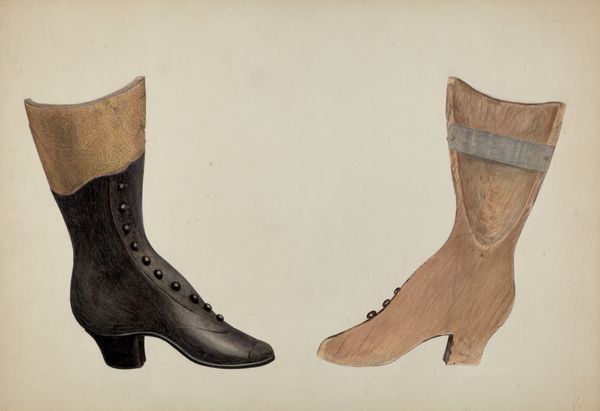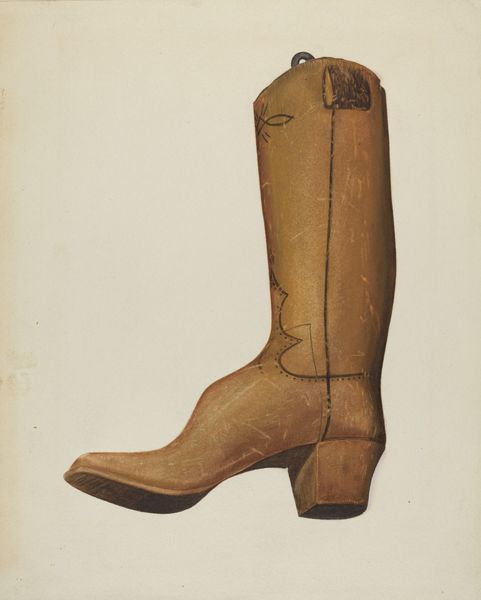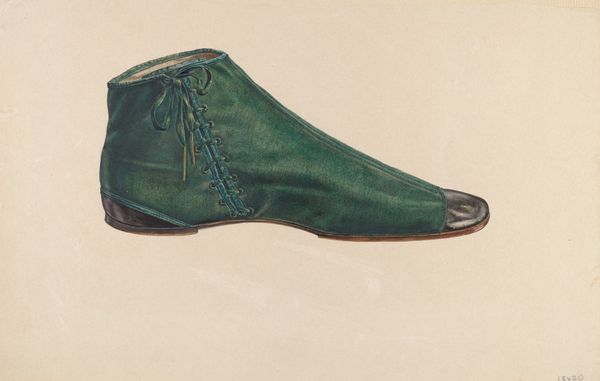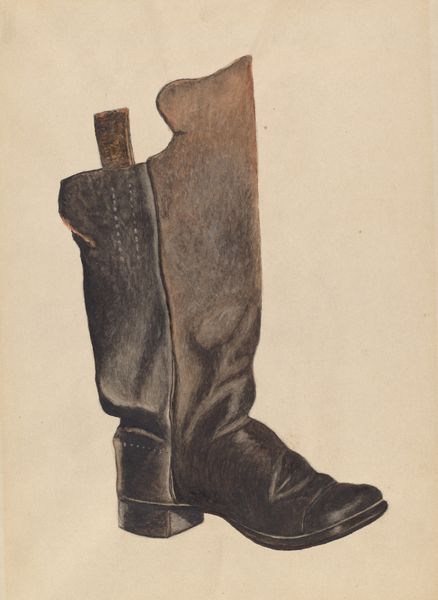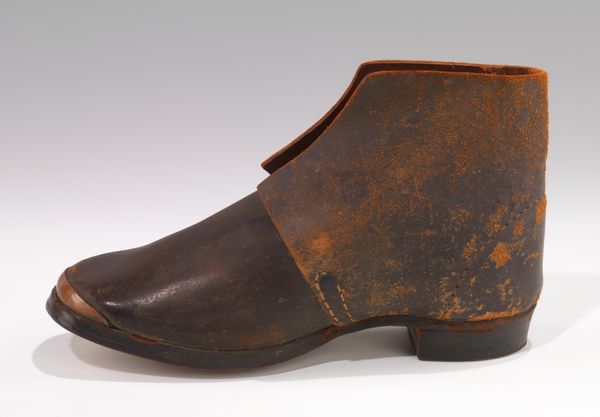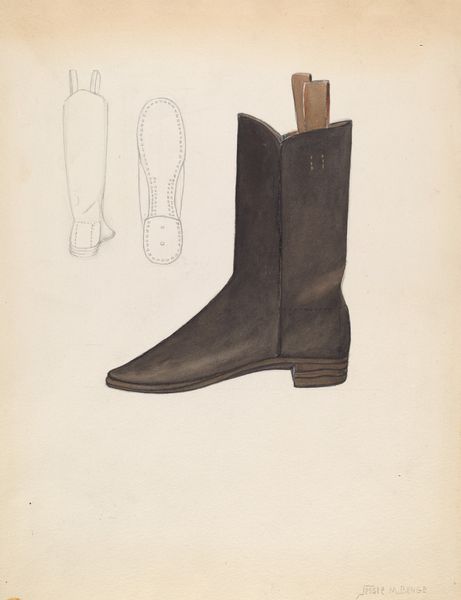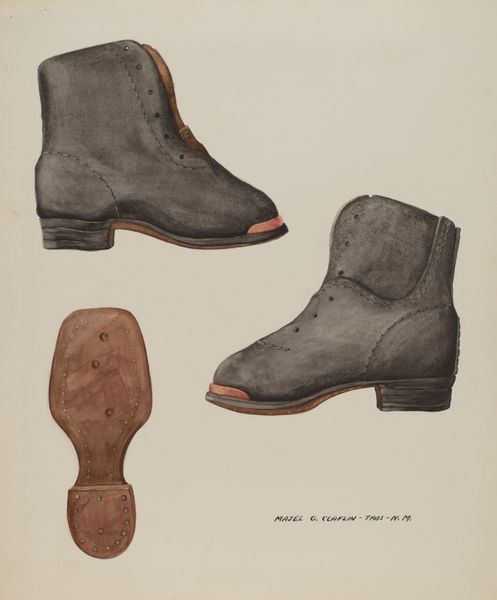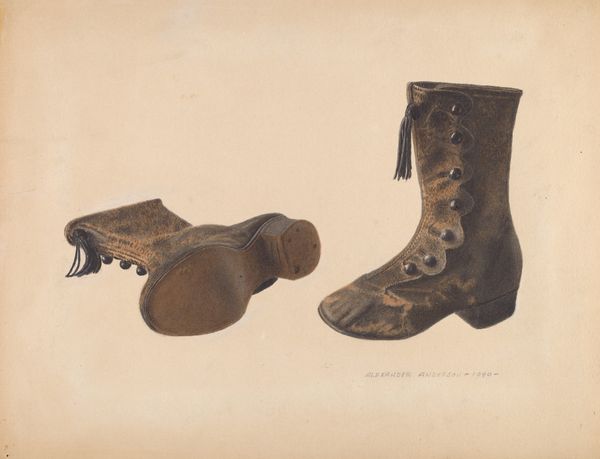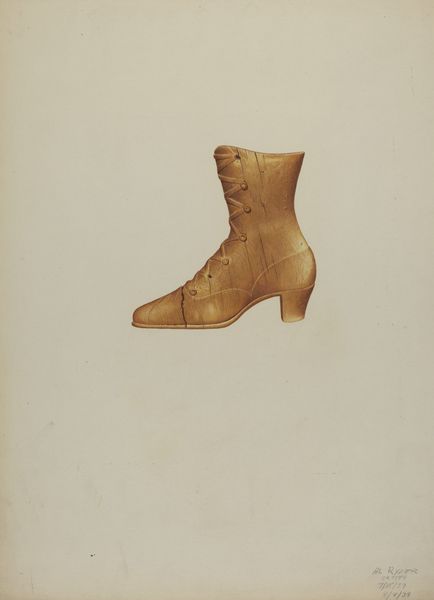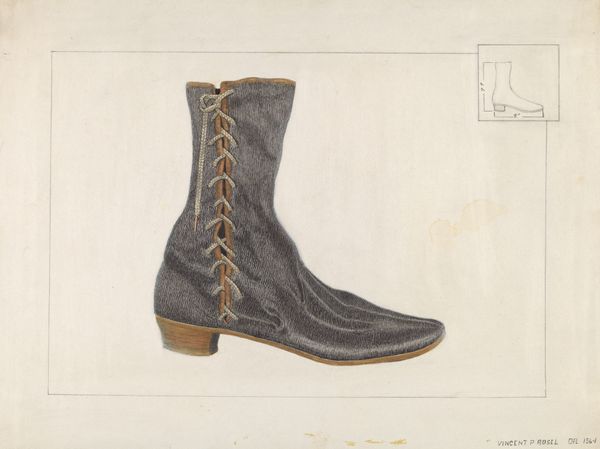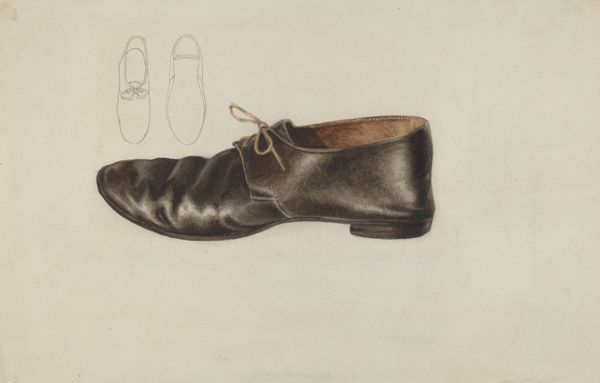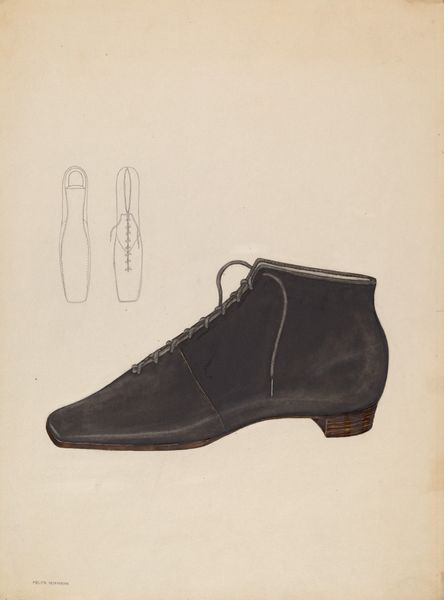
drawing, painting, watercolor
#
drawing
#
painting
#
watercolor
#
academic-art
Dimensions: overall: 24.6 x 35 cm (9 11/16 x 13 3/4 in.)
Copyright: National Gallery of Art: CC0 1.0
Editor: So this is Margery Parish's "Child's Shoes," from around 1937, done in watercolor and drawing. They're such worn-looking little boots... almost like a found object photograph rather than an idealized portrait. What strikes you most about them? Curator: I'm drawn to the way the image captures a very specific moment in the history of childhood. Think about the social and economic context of the 1930s. A seemingly simple image of used shoes speaks to concepts such as scarcity, reuse, and making do in difficult times. It’s almost documentary, wouldn’t you say? Editor: Absolutely. You see the evidence of wear, and the careful stitching... they feel so tangible. It feels different than a straightforward still life because the choice of object feels pointed. Was she making a social commentary? Curator: That’s where it becomes really interesting. By focusing on an object so intimately connected to a child’s everyday life, Parish subtly engages with larger conversations around social inequality. This watercolor avoids sentimentality and becomes a poignant visual statement of social conditions. Editor: That's not what I would have expected. How were works like this displayed or received back then? Curator: In this period there was growing demand for art in public spaces, from post offices to schools. Given its accessible realism, works such as "Child's Shoes" may have resonated strongly with a public facing real hardships. Considering also that Parish was a woman artist, it may reflect her close engagement with the domestic and childhood spheres. Editor: I never considered how the very mundane could carry such historical and social weight. I now understand why some might say objects hold cultural memory. Curator: Precisely. It allows us to explore the world through an individual experience situated in a given moment.
Comments
No comments
Be the first to comment and join the conversation on the ultimate creative platform.

